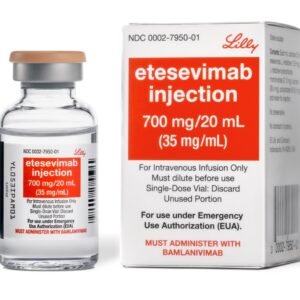Meropenem for Injection
Effects and efficacy:
Used to treat abdominal infections, respiratory infections (including cystic fibrosis patients), urinary tract infections, skin and soft tissue infections, sepsis, and infections suffered by immunocompromised patients caused by sensitive bacteria.
Usage and dosage:
The intravenous injection time of this product should be greater than 5 minutes, and the intravenous drip time should be greater than 15-30 minutes. When injected intravenously, sterile water for injection should be used to prepare a concentration of about 50 mg/ml. The following infusion solutions can be used for dissolution: 0.9% sodium chloride injection, 5% or 10% glucose injection, glucose sodium chloride injection. Adults: The dosage and time interval should be determined according to the type and severity of infection and the specific situation of the patient. The recommended daily dose is as follows. Pneumonia, urinary tract infection, gynecological infection (such as endometritis), skin or soft tissue infection, once every 8 hours, 500 mg once, intravenous drip. For the treatment of hospital-acquired pneumonia, peritonitis, neutropenia patients with combined infection and sepsis, once every 8 hours, 1 g once, intravenous drip. For patients with meningitis, it is recommended to take 1g once every 8 hours, intravenous drip or intravenous injection. Dose adjustment for adults with renal insufficiency: For patients with Ccr 26-50ml/min, the dose remains unchanged, and the dosing interval is extended to 12h; for patients with Ccr 10-25ml/min, the dose is halved, and the dosing interval is extended to 12h; for patients with Ccr < 10ml/min, the dose is halved, and the dosing interval is extended to 24h. For children aged >3 months and weighing <50kg, 10-20 mg/kg once, once every 8h, children with meningitis can increase the dose to 40mg/(kg·d) once every 8h, and cystic fibrosis can be given 25-40mg/kg once every 8h. There is currently no experience of using it in children with renal insufficiency.
Adverse reactions:
Main adverse reactions: rash, diarrhea, soft stools, nausea, vomiting. In addition, the main abnormalities in laboratory test values are increased ALT, increased AST, increased ALP, and increased eosinophils. Serious adverse reactions: anaphylactic shock, severe renal insufficiency such as acute renal failure, severe colitis with bloody stools (such as pseudomembranous colitis, etc.), interstitial pneumonia, PIE syndrome, spasm, central nervous system symptoms such as impaired consciousness, toxic epidermal necrosis (LYELL syndrome), Stevens-Johnson syndrome, pancytopenia, agranulocytosis, leukopenia, hepatic insufficiency, jaundice, and reports of hemolysis and thrombophlebitis in similar drugs. Hypersensitivity reactions: urticaria, fever, erythema, itching, fever, redness. Blood system: granulocytopenia, thrombocytopenia or decrease, lymphocytosis, eosinophilia, red blood cells, hematocrit and decrease, etc. Nervous system: headache, fatigue. Liver: increased LDH, γ-GT, bilirubin, urobilinogen and yellow plague. Kidney: increased β2-microglobulin, BUN and creatinine. Digestive system: abdominal pain, loss of appetite, stomatitis, Candida albicans infection, vitamin K deficiency symptoms, vitamin B deficiency symptoms.
Drug contraindications:
Allergic to this product is prohibited. Use with caution during pregnancy and lactation.
Share:
Products
Our offers
Health Classification
Let us work together to protect precious health



























